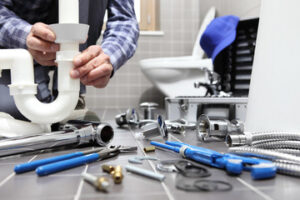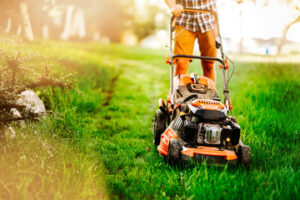Hiring a plumber can save you time and money by ensuring that plumbing issues are resolved quickly and efficiently. Plumbing systems are an essential part of any home or building, providing clean water for drinking, cooking, and cleaning while removing wastewater safely and effectively.

When plumbing problems arise, they can disrupt daily life, increase water bills, and cause costly damage to property if not addressed promptly. Contact Plumbing Express, Inc. for professional help.
Professional plumbers have the training, experience, and tools to diagnose and repair issues accurately, preventing further complications and reducing long-term expenses. Understanding the value of professional plumbing services helps property owners make informed decisions that protect their investments and ensure the smooth operation of their plumbing systems.
One of the primary ways a plumber can save time and money is through accurate diagnosis and efficient repairs. Plumbing issues such as leaks, clogs, and low water pressure can be challenging to identify without the right knowledge and tools. A professional plumber can quickly assess the situation, determine the root cause of the problem, and implement the most effective solution. This reduces the time spent troubleshooting and minimizes the risk of further damage caused by incorrect or incomplete repairs. By addressing the issue promptly, plumbers help prevent water waste, property damage, and higher utility costs.
Leaks are a common plumbing issue that can result in significant water loss and property damage if left unaddressed. Even a small leak can waste hundreds of gallons of water over time, increasing water bills and causing damage to walls, floors, and ceilings. Professional plumbers use advanced techniques such as pressure testing, acoustic sensors, and infrared cameras to locate hidden leaks without damaging property. Once the leak is identified, the plumber can repair or replace the affected pipe or fixture, restoring the integrity of the plumbing system and preventing further water loss. This not only saves money on water bills but also protects the property from costly structural damage.
Clogs are another common problem that can disrupt the functionality of plumbing systems and lead to slow drainage, backups, and unpleasant odors. While some clogs can be cleared with household tools, more severe blockages require professional intervention. Plumbers use specialized equipment such as drain snakes, hydro jetting machines, and video inspection tools to remove clogs and identify underlying issues such as tree root intrusion or pipe damage. By resolving clogs efficiently, plumbers prevent recurring drainage problems and avoid the need for more extensive repairs in the future. This saves both time and money by ensuring that plumbing systems operate smoothly and efficiently.
Water pressure issues can affect the performance of plumbing fixtures and appliances, making daily tasks such as showering, washing dishes, and doing laundry more difficult. Low water pressure is often caused by clogged pipes, leaks, or issues with the water supply line, while high water pressure can damage pipes and fixtures, leading to leaks and premature wear. Plumbers have the expertise to diagnose and correct water pressure issues by cleaning or replacing pipes, adjusting pressure regulators, and installing expansion tanks. Maintaining balanced water pressure not only improves the performance of plumbing fixtures but also extends their lifespan, reducing the need for frequent replacements and repairs.
Installing new plumbing fixtures or upgrading existing ones can also save time and money when handled by a professional plumber. Modern fixtures such as low-flow toilets, faucets, and showerheads are designed to conserve water without sacrificing performance. Plumbers can recommend the most efficient fixtures for a property, ensuring that they are installed correctly and comply with local plumbing codes. Proper installation reduces the risk of leaks, improves water efficiency, and lowers utility bills over time. Additionally, professional plumbers have the tools and knowledge to complete installations quickly and accurately, minimizing disruption to daily life.
Regular maintenance is essential for preventing plumbing issues and extending the lifespan of plumbing systems. Professional plumbers offer maintenance services such as inspecting pipes and fixtures, cleaning drains, and testing water pressure. These preventive measures help identify potential problems before they become major issues, reducing the risk of costly repairs and water damage. For example, identifying and repairing a small leak early prevents it from developing into a larger issue that could require extensive repairs and property restoration. By investing in regular maintenance, property owners save money on repairs and improve the overall efficiency of their plumbing systems.
Emergency plumbing services are another way professional plumbers save time and money. Plumbing emergencies such as burst pipes, sewer backups, and major leaks require immediate attention to prevent extensive property damage and health hazards. Professional plumbers are available to respond to emergencies quickly, using specialized tools and techniques to resolve the issue and minimize damage. Fast response times and expert repairs help restore normal operations and prevent further complications, reducing repair costs and the potential for long-term structural damage. Having access to reliable emergency plumbing services provides peace of mind and financial protection in the event of unexpected problems.
Plumbers also save money by helping property owners comply with local building codes and regulations. Plumbing systems must meet specific standards for safety, sanitation, and environmental impact. Professional plumbers are familiar with these requirements and ensure that all installations and repairs are code-compliant. Non-compliant plumbing work can result in fines, penalties, and the need for costly corrections. By working with a licensed plumber, property owners avoid legal issues and ensure that their plumbing systems meet all regulatory standards. This reduces the risk of future expenses related to code violations and ensures the long-term value of the property.
In addition to repairs and maintenance, plumbers provide valuable advice and guidance on improving the efficiency and performance of plumbing systems. They can recommend energy-efficient water heaters, water-saving fixtures, and eco-friendly plumbing solutions that reduce utility costs and environmental impact. Plumbers also educate property owners on best practices for maintaining plumbing systems, such as avoiding the disposal of grease and food particles down drains, using drain covers to prevent clogs, and monitoring water pressure for signs of leaks or blockages. This knowledge empowers property owners to make informed decisions and prevent common plumbing issues, saving time and money in the long run.
Professional plumbers have the training and experience to handle complex plumbing issues that may be beyond the capabilities of property owners. Attempting to repair or modify plumbing systems without the proper knowledge and tools can lead to mistakes that cause further damage and increase repair costs. For example, incorrectly installing a pipe or fixture can result in leaks, poor water pressure, and drainage problems. Professional plumbers understand the intricacies of plumbing systems and use their expertise to provide long-lasting solutions. Their ability to identify and resolve issues quickly and accurately reduces the need for repeated repairs and ensures that plumbing systems operate efficiently.
Plumbers also have access to specialized equipment and materials that are not readily available to the general public. This includes high-pressure jetting machines, video inspection cameras, pipe locators, and advanced sealing compounds. These tools enable plumbers to perform precise repairs and installations with minimal disruption to the property. For example, video inspection cameras allow plumbers to identify hidden blockages, leaks, and structural issues within pipes without the need for invasive digging or demolition. By using advanced technology, plumbers save time and reduce the cost of labor and materials.
Investing in professional plumbing services provides long-term financial benefits by improving the efficiency and durability of plumbing systems. Efficient plumbing systems use less water and energy, reducing utility costs and environmental impact. High-quality materials and expert installation ensure that pipes, fixtures, and appliances last longer and require fewer repairs over time. Additionally, well-maintained plumbing systems enhance the value of a property and reduce the risk of unexpected repairs and damage. By relying on the expertise of professional plumbers, property owners protect their investments and enjoy reliable, cost-effective plumbing solutions.
Ultimately, hiring a professional plumber saves time and money by ensuring that plumbing systems are installed, maintained, and repaired correctly. Plumbers provide fast and accurate diagnosis, efficient repairs, and expert guidance on improving the performance and efficiency of plumbing systems. Their ability to handle complex issues, use advanced tools and techniques, and comply with local codes and regulations reduces the risk of costly mistakes and long-term damage. Investing in professional plumbing services protects property value, reduces utility costs, and provides peace of mind knowing that plumbing systems are in good hands. Understanding the value of professional plumbing services highlights the importance of working with experienced plumbers to maintain a safe, functional, and efficient living or working environment.
4o

